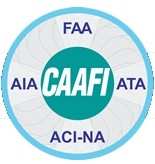Fri, Dec 02, 2011
Stated Goal Is Cleaner, More Sustainable Jet Fuel
The FAA is awarding $7.7 million in contracts to eight companies
to help advance alternative, environmentally-friendly, sustainable
sources for commercial jet fuel. The FAA funds are being
distributed by the DOT's John A. Volpe Center.

The contracts address a recommendation issued by the Future of
Aviation Advisory Committee, which was commissioned by Secretary
LaHood last year. The committee, comprised of experts from
industry, academia, labor and government, specifically recommended
that DOT exercise strong national leadership to promote and display
U.S. aviation as a first user of sustainable alternative fuels.
“These new green aviation fuels will use energy sources right
here at home,” said U.S. Secretary of Transportation Ray
LaHood. “This type of innovation will create good-paying jobs
in the airline and energy industries and help protect the
environment at the same time.”
Accordingly, the eight companies selected for the contracts will
help the FAA develop and approve alternative, sustainably-sourced
“drop-in” jet fuels that can be used without changing
aircraft engine systems or airport fueling infrastructure. As part
of that work, the companies will develop these biofuels from
sources such as alcohols, sugars, biomass, and organic materials
known as pyrolysis oils. In addition, the contracts call for
research into alternative jet fuel quality control, examination of
how jet biofuels affect engine durability, and provide guidance to
jet biofuel users about factors that affect sustainability.
“Alternative aviation fuels offer enormous potential
environmental and economic benefits,” said FAA Administrator
Randy Babbitt. “This work, in combination with investments
being made by other U.S. agencies and industry, will advance our
pursuit of clean alternative jet fuels for a more sustainable
NextGen aviation system in the United States and around the
world.”
The contracts build on alternative fuel development investments by
the Departments of Defense, Energy, Agriculture, the National
Aeronautics and Space Administration and the Environmental
Protection Agency, as well as by FAA. The contracts stem from work
the FAA is doing through the agency’s Commercial Aviation
Alternative Fuel Initiative (CAAFI) and the agency’s
Continuous Lower Emissions, Energy and Noise (CLEEN) program.
More News
Check out https://affordableflying.net/attend/ Right Away and Get YOUR Tickets To the Affordable Flying Expo! OK.... with a little over a month to go, it’s time to get seriou>[...]
"Amelia made it almost three-quarters of the way around the world before she suddenly, and without notice, vanished—never to be seen again. Her disappearance, almost 90 years>[...]
Aero Linx: Cessna 150-152 Club The Cessna 150-152 Club has been the go-to place for information about the care and operation of the World’s Most Popular Two-Place Airplane si>[...]
Hover Taxi Used to describe a helicopter/VTOL aircraft movement conducted above the surface and in ground effect at airspeeds less than approximately 20 knots. The actual height ma>[...]
Also: Purdue In Space?, 4 SpecOps Lost In Helo Crash, Solid-Fuel Ramjet, Ultra-High Airspace Over FL The US Army recently confirmed its plans to thin out its active duty aviation r>[...]
 Ticket Sales NOW OPEN for 2025 Affordable Flying Expo!
Ticket Sales NOW OPEN for 2025 Affordable Flying Expo! Aero-News: Quote of the Day (09.29.25)
Aero-News: Quote of the Day (09.29.25) ANN's Daily Aero-Linx (09.29.25)
ANN's Daily Aero-Linx (09.29.25) ANN's Daily Aero-Term (09.29.25): Hover Taxi
ANN's Daily Aero-Term (09.29.25): Hover Taxi Airborne 09.26.25: Army Cuts AV-Ranks, 2025 ATC Hiring, AF Next-Gen Fighter
Airborne 09.26.25: Army Cuts AV-Ranks, 2025 ATC Hiring, AF Next-Gen Fighter



